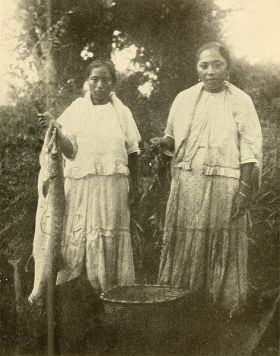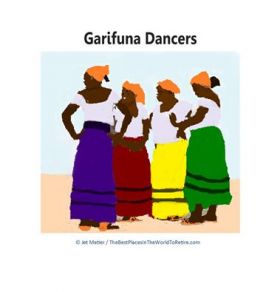What is the culture of Cayo, Belize, including San Ignacio and Belmopan?
Jaseth Bassaragh - The Alpha & Omega Group
 The culture in the Cayo District in Belize is very diverse. You will find many Mestizo (Maya-Indian) mixed with Hispanics. Then you'll have Hispanics who are not Mestizos and then interspersed with that you will have what we call Creole people, which is a mixture of African with White.
The culture in the Cayo District in Belize is very diverse. You will find many Mestizo (Maya-Indian) mixed with Hispanics. Then you'll have Hispanics who are not Mestizos and then interspersed with that you will have what we call Creole people, which is a mixture of African with White. The culture is diverse and so is the food. There is a wide variety of food types from which to choose, different menus for different cultures. There is also...
 The culture in the Cayo District in Belize is very diverse. You will find many Mestizo (Maya-Indian) mixed with Hispanics. Then you'll have Hispanics who are not Mestizos and then interspersed with that you will have what we call Creole people, which is a mixture of African with White.
The culture in the Cayo District in Belize is very diverse. You will find many Mestizo (Maya-Indian) mixed with Hispanics. Then you'll have Hispanics who are not Mestizos and then interspersed with that you will have what we call Creole people, which is a mixture of African with White. The culture is diverse and so is the food. There is a wide variety of food types from which to choose, different menus for different cultures. There is also diversification in terms of the different businesses. The different orientation of people will be reflected in everyday life.
The Mestizo people came to Belize from Guatemala and the border area between Belize and Guatemala, for example, where Xunantunich is located, one of the largest Maya ruins.
There are also groupings of Maya-Indian from people who were affiliated with the extinct Mayans. So you'll have that culture there and you could find the history and all the background of the people from the biggest ruin is in Belize, the Xunantunich, which is very close to Guatemalan border.
Guatemala claims Belize as part of Guatemala. Through conquests and acquisitions and division of land Belize got part of its land and the rest is Guatemala. But when there were no borders you could really understand why Guatemala would claim what is now Belize because the people are the same on both sides of the border. There are the Maya-Indians who are remnants of the extinct Maya race separate and apart from the Hispanics who have come not just from Guatemala but further in Central America, from places such as El Salvador and Panama, because you could drive from Guatemala to all the way down to these places, and there are settlements of those natives coming to Belize through Guatemala. So these people are not Guatemaltecans. They're probably Salvadorians, Nicaraguans, Honduranians, Panamanians, and he you'll have remnants of British conquests and intermarriage whites and blacks, which resulted in the Creole race.
(Pictured: Photo from Gann's "The Maya Indians of southern Yucatan and northern British Honduras"-- "British Honduras" is now called "Belize".)
Posted July 24, 2015
Hannah Weber - Vanilla Hills Lodge
 Cayo is a melting pot of different cultures. There are a lot of people from different places who come to live here. If I am not wrong, Cayo is the second biggest expat destination in Belize so you see a lot of variety. People from the US are completely different from the people from Europe, Canada, or Japan but they all live close together here in Cayo and I have a feeling that they accept each other more than they do in other places.
Cayo is a melting pot of different cultures. There are a lot of people from different places who come to live here. If I am not wrong, Cayo is the second biggest expat destination in Belize so you see a lot of variety. People from the US are completely different from the people from Europe, Canada, or Japan but they all live close together here in Cayo and I have a feeling that they accept each other more than they do in other places. The differences in...
 Cayo is a melting pot of different cultures. There are a lot of people from different places who come to live here. If I am not wrong, Cayo is the second biggest expat destination in Belize so you see a lot of variety. People from the US are completely different from the people from Europe, Canada, or Japan but they all live close together here in Cayo and I have a feeling that they accept each other more than they do in other places.
Cayo is a melting pot of different cultures. There are a lot of people from different places who come to live here. If I am not wrong, Cayo is the second biggest expat destination in Belize so you see a lot of variety. People from the US are completely different from the people from Europe, Canada, or Japan but they all live close together here in Cayo and I have a feeling that they accept each other more than they do in other places. The differences in culture are not to be underestimated. For example, Austrians are very straightforward and some Belizeans might find that rude. On the other hand, Belizeans like to say “yes” even if they mean “no.” Another example is if you ask a Belizean if he knows the way, he would say, “yes” even if he doesn’t. Then he would tell you something else. If you ask him if he could do a certain task, he’d very often say, “yes” even if he can’t do it. They say that not to get embarrassed or lose face.
You will eventually figure out if you’re getting the right answer, or something else. For example, you ask someone to fix your washing machine and he says yes he will do it on Tuesday. Then Tuesday comes, you’re sitting there waiting, you call him but he says he will come later or that his grandma needs help so he won’t be able to come Tuesday but he will fix your washing machine on Wednesday. Then he won’t show up the next day, either. You call him again and he tells you that he’ll do it in 2 weeks. They tend to postpone things and find excuses as to why they couldn’t do it but they won’t say, “I can’t do it now.” In the end, you just give up.
There is no way for you to tell based on the initial conversation whether they mean their “yes” or they don’t; at least not in the beginning. But as you live here longer, you will learn to tell the difference based on their behavior. We Austrians are very different. If we don’t know something, we say, “no”, and if we do, we say, “yes”. This is the difficult part of dealing with different cultures.
(Belizean dancers by Jet Metier for Best Places in the World to Retire upcoming ebook about Belize, pictured.)
Posted July 3, 2016


